In 2022, excavation work was carried out at kurgan №6 of the Myntobe burial site. This is kurgan located in the northeastern part of the burial site, on the northern edge of a high hill oriented southward, 23 meters north of kurgan №5. As a result of the research, a circular above-ground structure known as a «naus» was discovered. Inside the chamber, a skeleton in its original position and scattered human bones were found (Figures 1–2). It was established that the naus had been looted in ancient times. Similar burial structures have been uncovered at the Borizhar burial site on the banks of the Arys River, as well as at the Shaga and Sidak burial sites in the Turkestan region. The data obtained provide insights into the construction features of nauses and burial traditions.
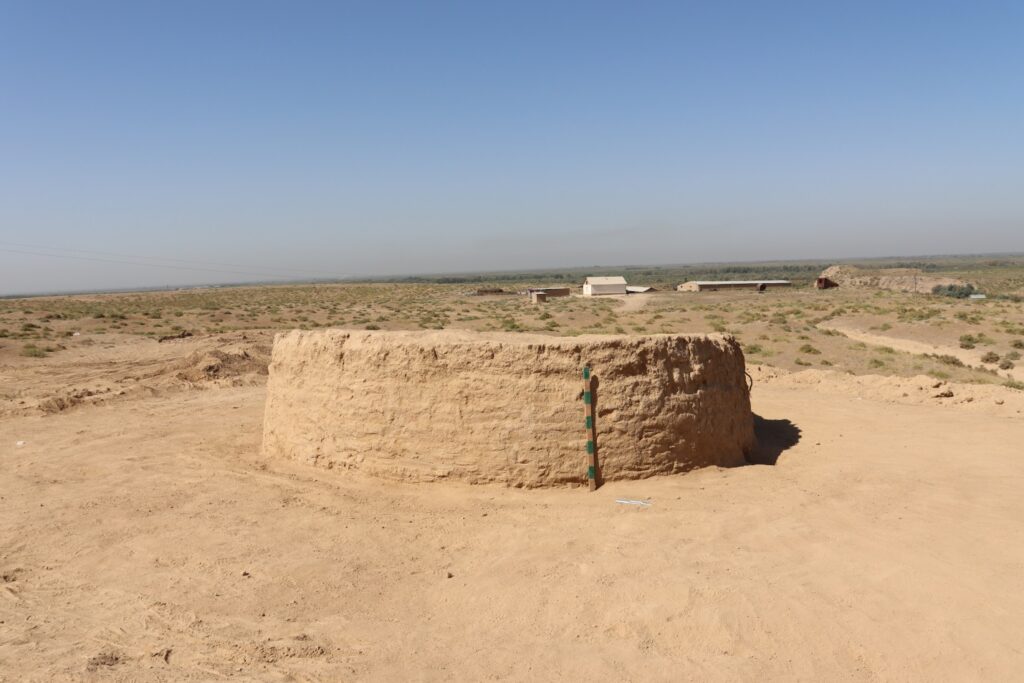
Figure 1. View of the naus.
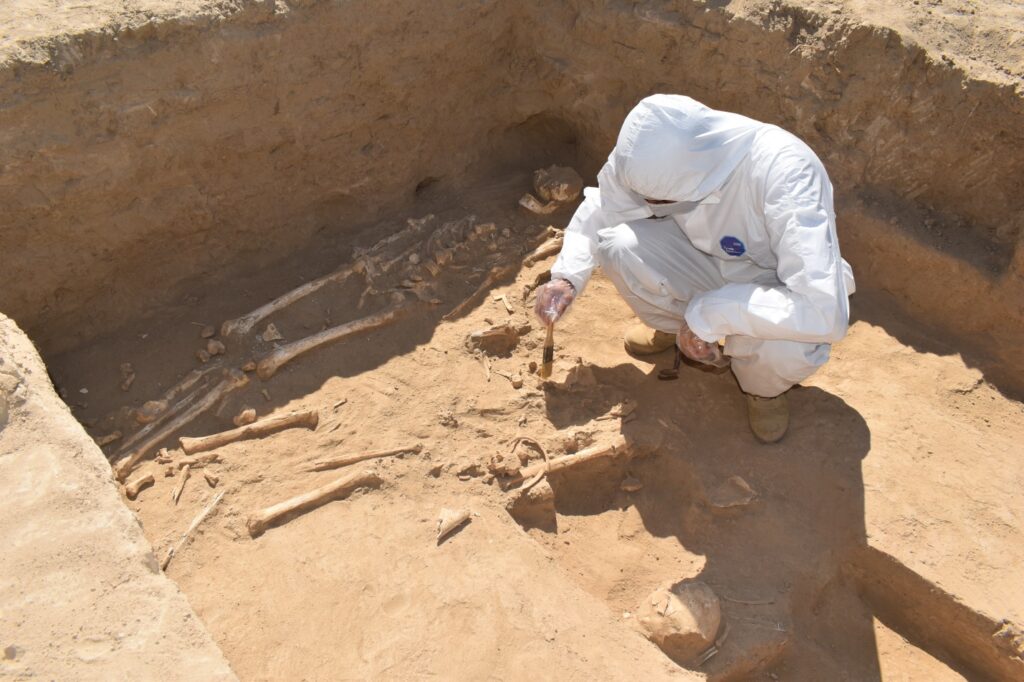
Figure 2. View of the process of cleaning skeletons in the chamber.
In 2022, archaeological excavations were carried out at kurgan №7 of the Myntobe burial site. This mound is located on the southwestern edge of the burial site, on the slope near the edge of a ravine stretching from northeast to southwest. Its shape resembles a drop. Measurements using a laser total station determined that the kurgan has a diameter of 14 meters and a height of 1.30 meters. During the excavations, three clay vessels were discovered at the very center of the kurgan, at ground level. One of them was made on a potter’s wheel and covered with red engobe. In addition, a T-shaped catacomb grave was uncovered at a depth of about 5 meters from the reference point. Inside the chamber, a single human skeleton was found. Apart from the clay vessels discovered in the center of the mound, no other grave goods were found during the burial (Figures 1–3).
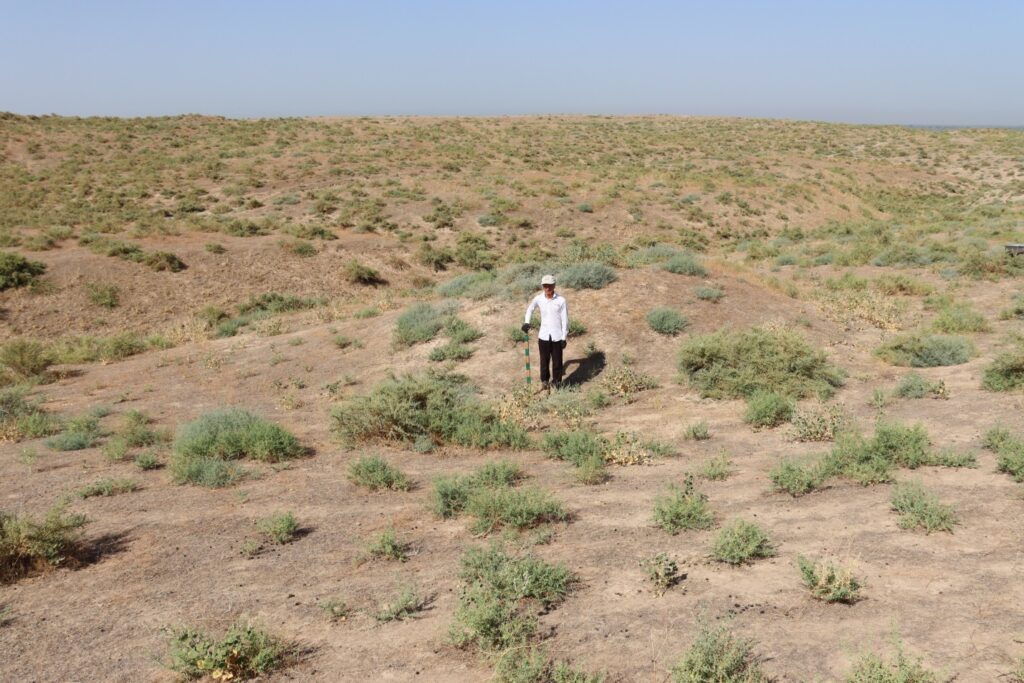
Figure 1. View before excavation.
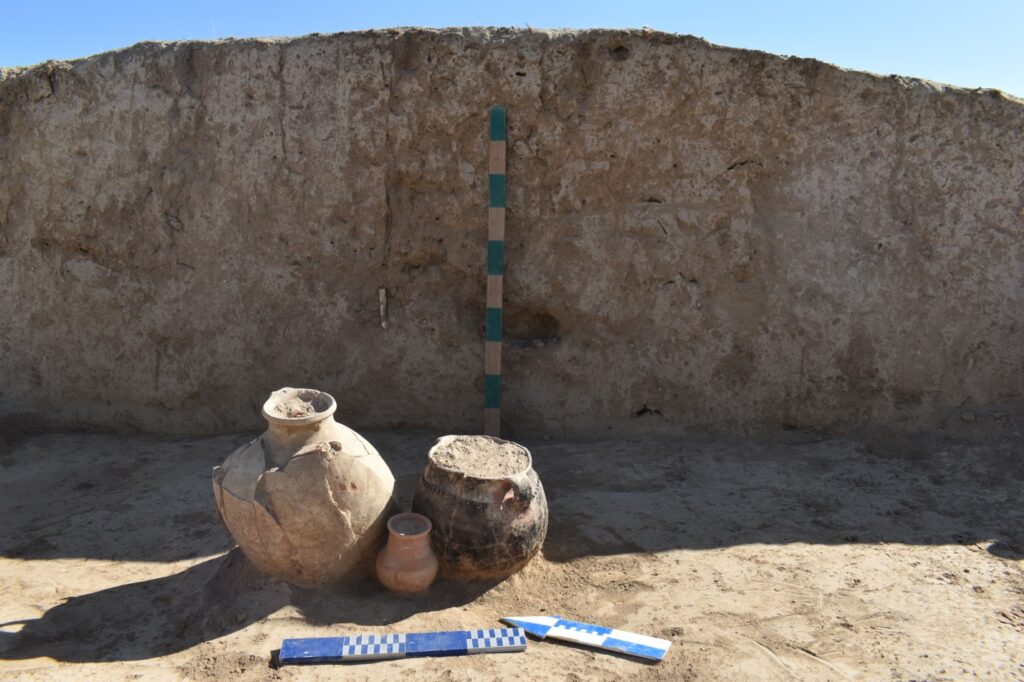
Figure 2. Clay vessels found at the center of the mound on the ground surface.
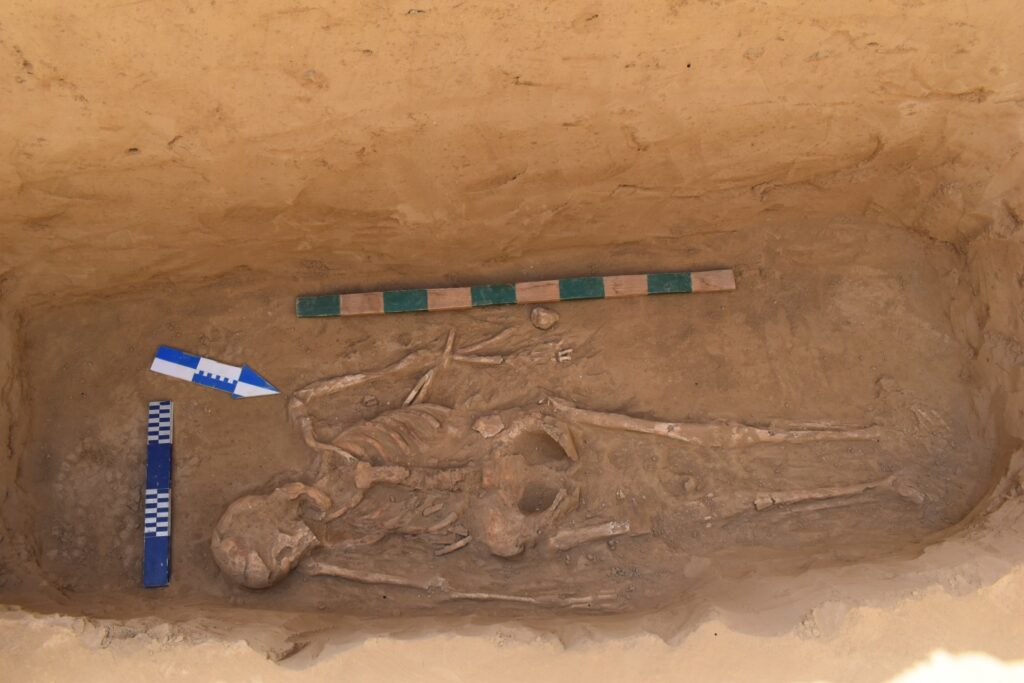
Figure 3. Skeleton lying in the chamber.
In 2023, archeological research was conducted in the Myntobe cemetery and new scientific results were obtained. During the excavation of gravesite No. 8, individual human bones and a pair of buckles were found in the burial chamber. Unfortunately, it became known that this kurgan was looted at the time.
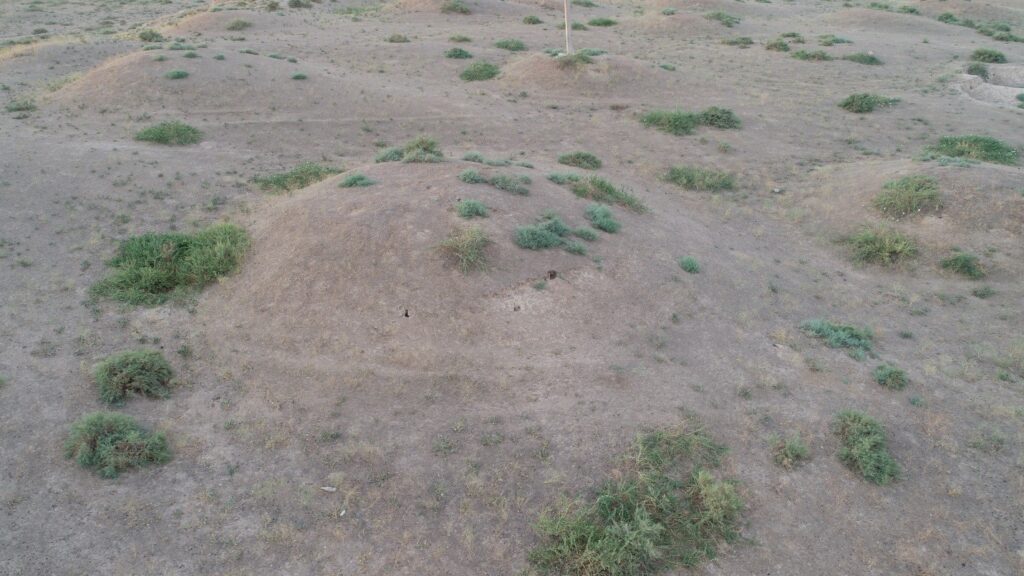
Excavation of kurgan № 8
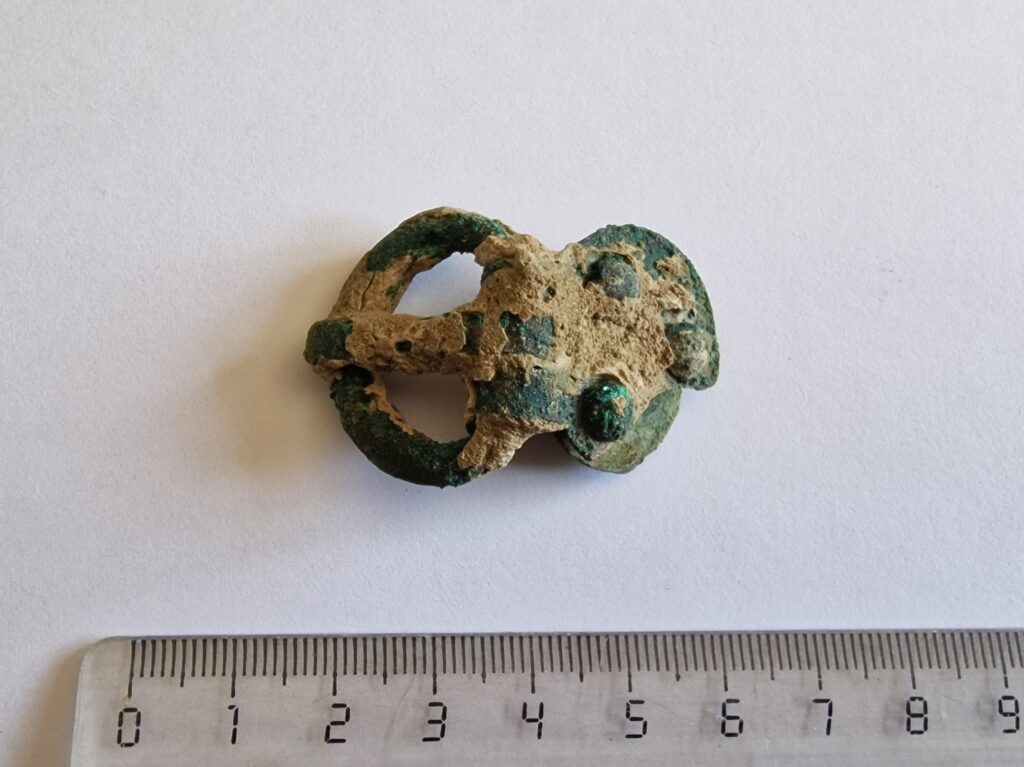
A buckle found in kurgan №8
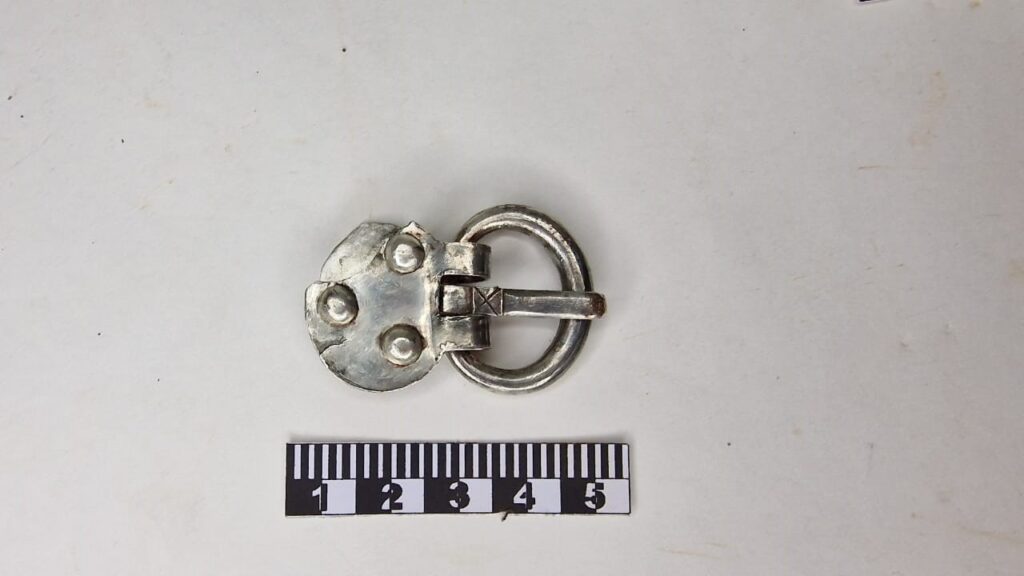
Found buckle in kurgan № 8 after cleaning
During excavations of kurgan ground № 9, a catacomb kurgan was discovered. When clearing the interior of the tomb, a diamond-shaped skeleton was found. There is a jug and a bowl on the skeleton’s shoulder. This is one of the valuable finds that testifies to the worldview of the Kangls. During excavations to the right of the dromos of kurgan ground No. 9, in addition to the main chamber, a side grave (undercut) was discovered. This is hitherto unknown news. The discovery of a secondary grave in the dromos, separate from the main chamber under one of the undercut, showed Han period kurgan in a new light.
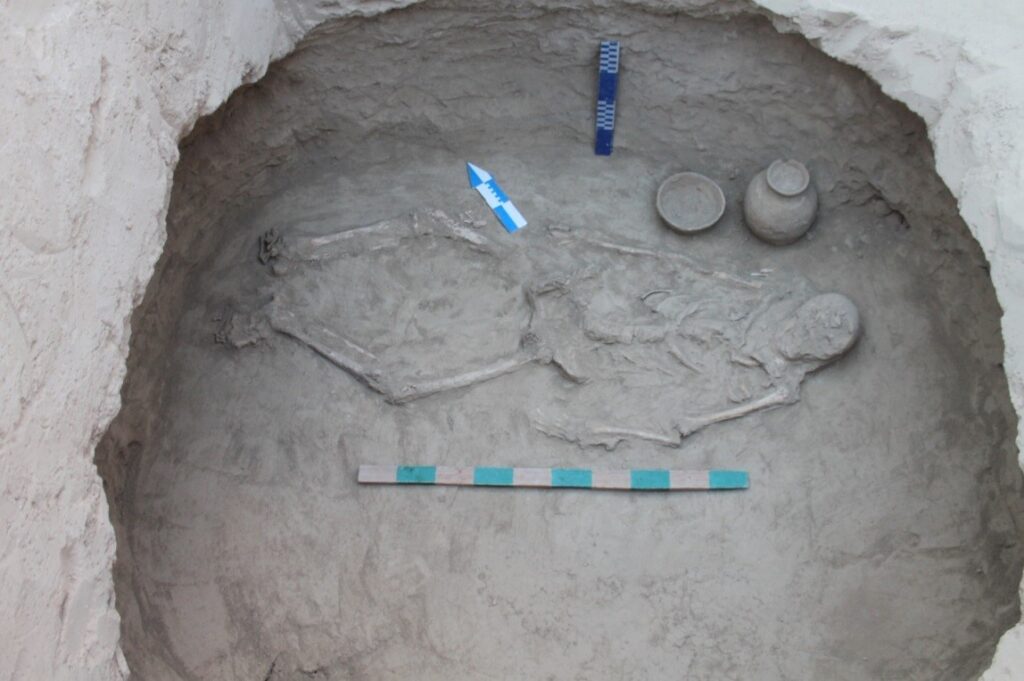
Skeleton lying in the shape of a diamond in kurgan № 9.
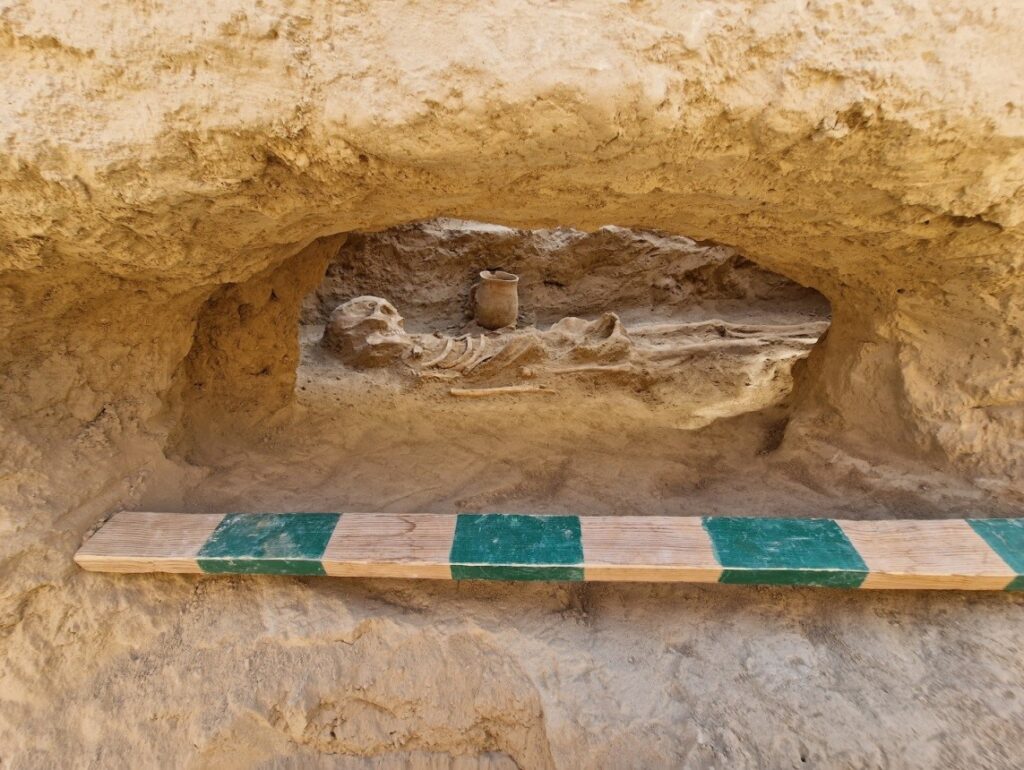
Lateral kurgan undercut, found on the right side of dromos № 9
During excavations at kurgan № 10, along with the main chamber, a side grave was discovered, as in kurgan № 9. When clearing out the internal space of the main chamber, a skeleton lying in the shape of a rhombus was discovered. On the right shoulder of the skeleton, along with the remains of a clay jug, there is a sheep talus bone. This is one of the valuable finds that testifies to the worldview of the Kangli. During excavations on the left side of the dromos of kurgan ground No. 10, in addition to the main chamber, a side grave (undercut) was discovered. The remains of a clay jug and a whole jug were placed at the head of the skeleton. The skeleton located here is possibly related to the skeleton in the main chamber.
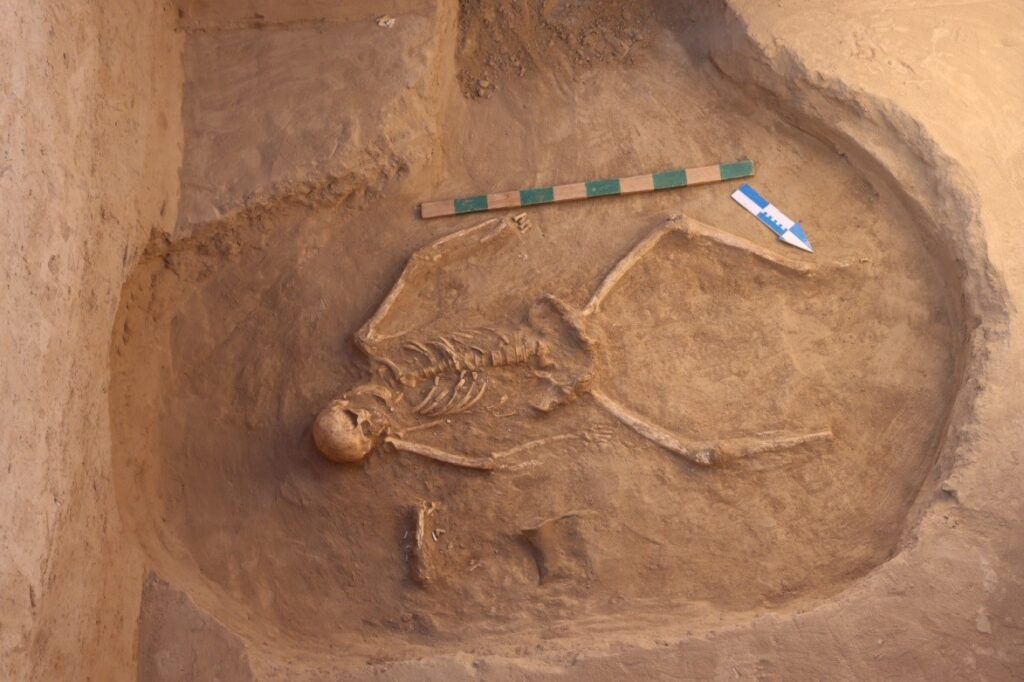
Skeleton lying in the main chamber in the shape of a diamond in kurgan № 10
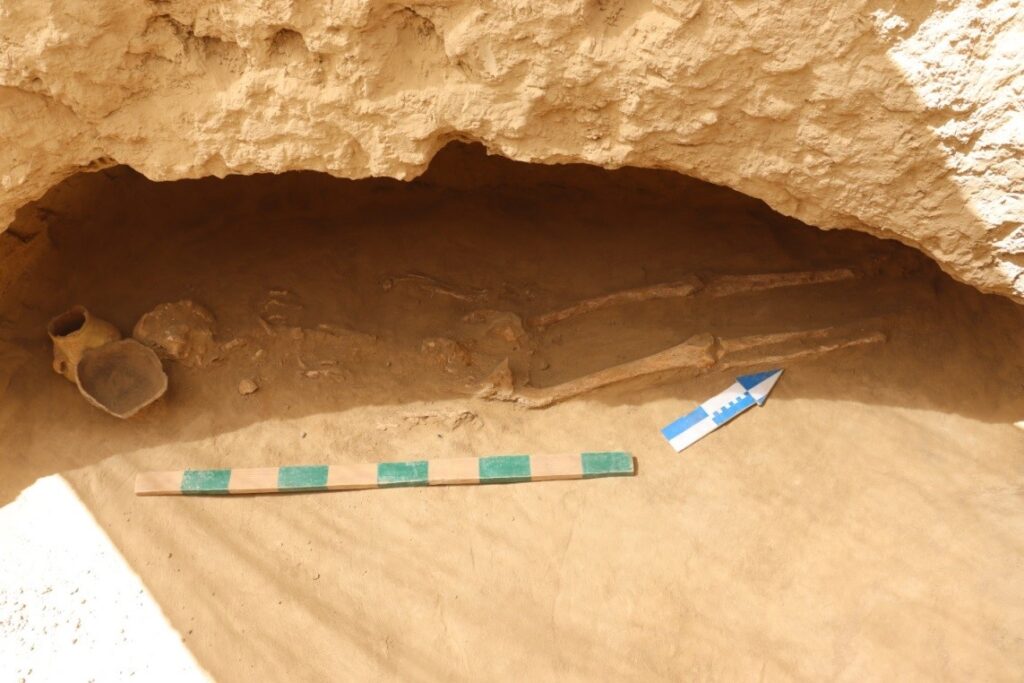
An undercut grave was found on the left side of the dromos in kurgan № 10.
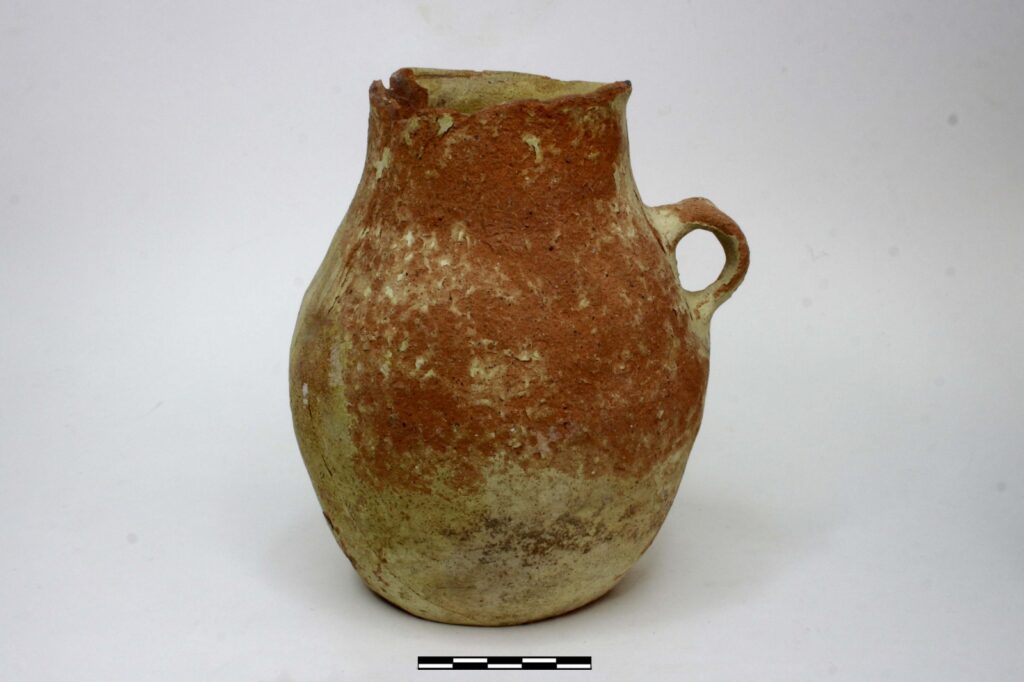
A jug found in the undercut grave of kurgan № 10
During the excavations of kurgan №11, a catacomb grave was discovered. During clearing, a skeleton was discovered inside the chamber, lying on its back. At the head of the skeleton, a jug, a clay vessel in the shape of a flask (flask), a stone spindle head and a small incense burner were found. These are valuable finds that testify to the worldview of the Kangli.
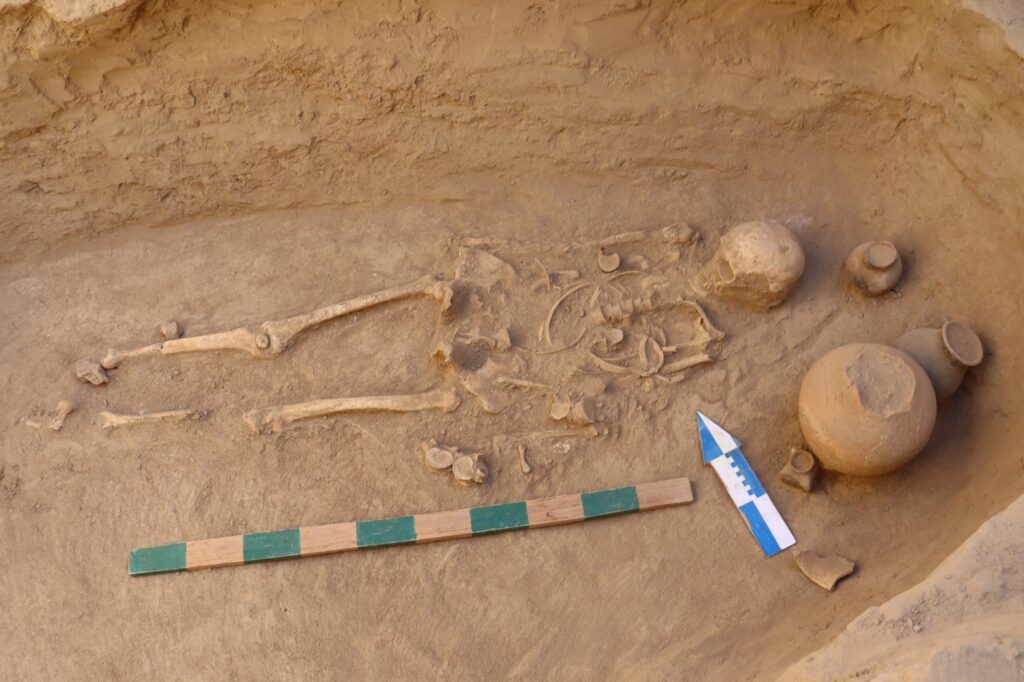
Skeleton located in kurgan № 11
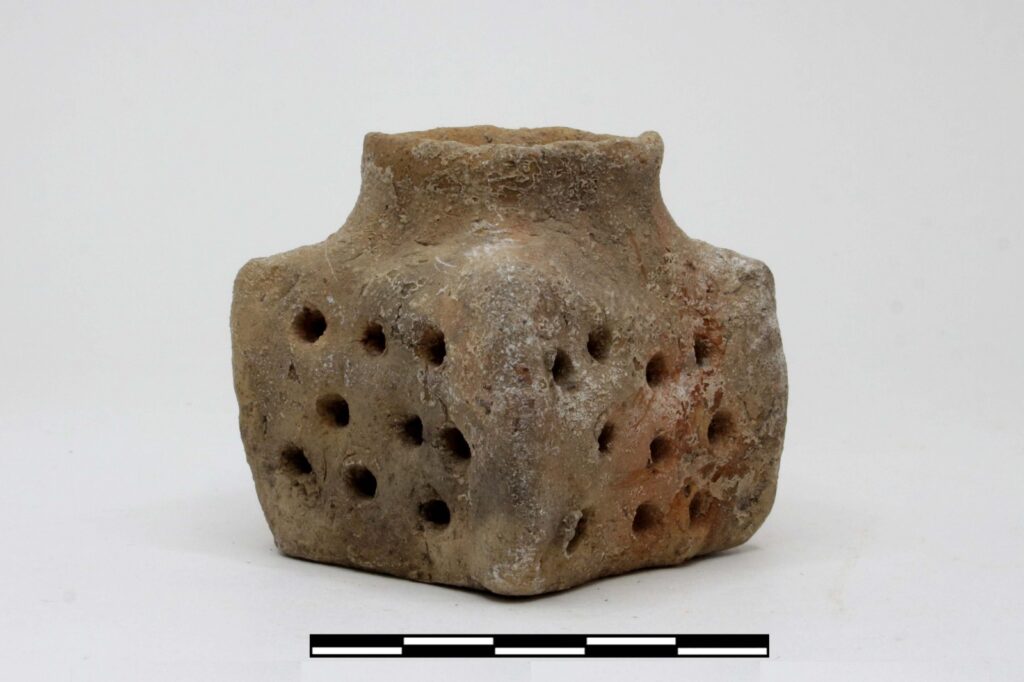
Censer found in kurgan №11
During the excavations of kurgan №12, a catacomb grave was discovered. While clearing the interior of the cell, the skeleton of a teenager was discovered lying on his back. During excavations at the entrance to the chamber, a small bronze bell, a bronze ring, a bronze ornament, a bead (talisman) in the shape of a bird made of stone and two clay vessels (one in the shape of a barrel) were found in the chamber. These items are valuable evidence of the material culture of the Myntobе people.
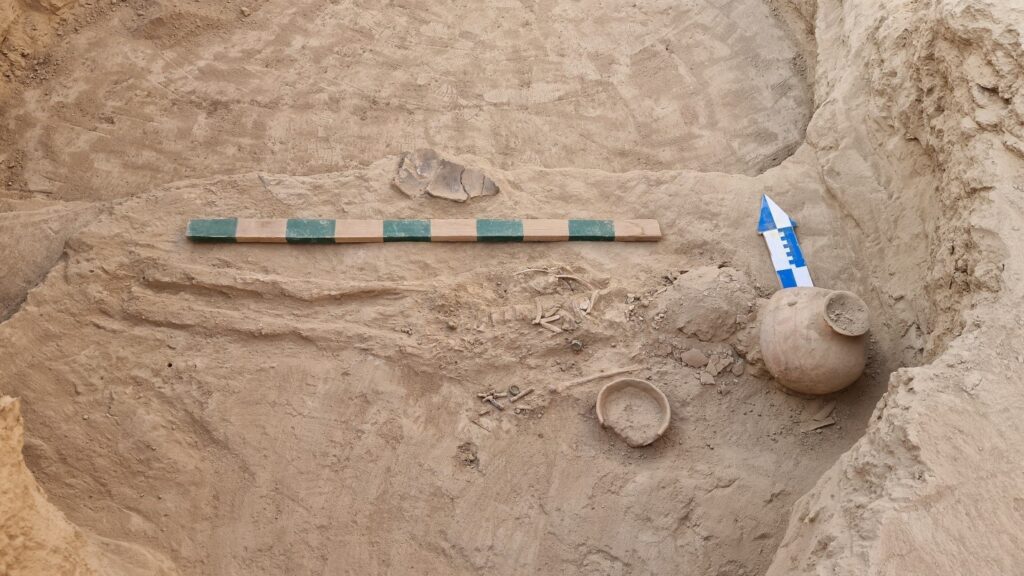
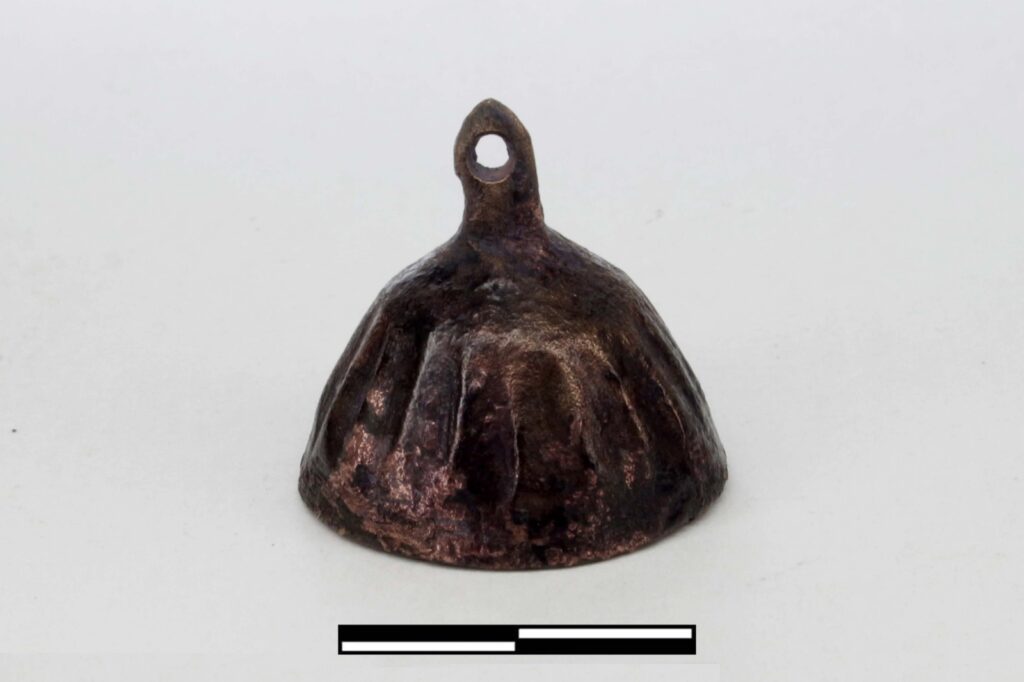
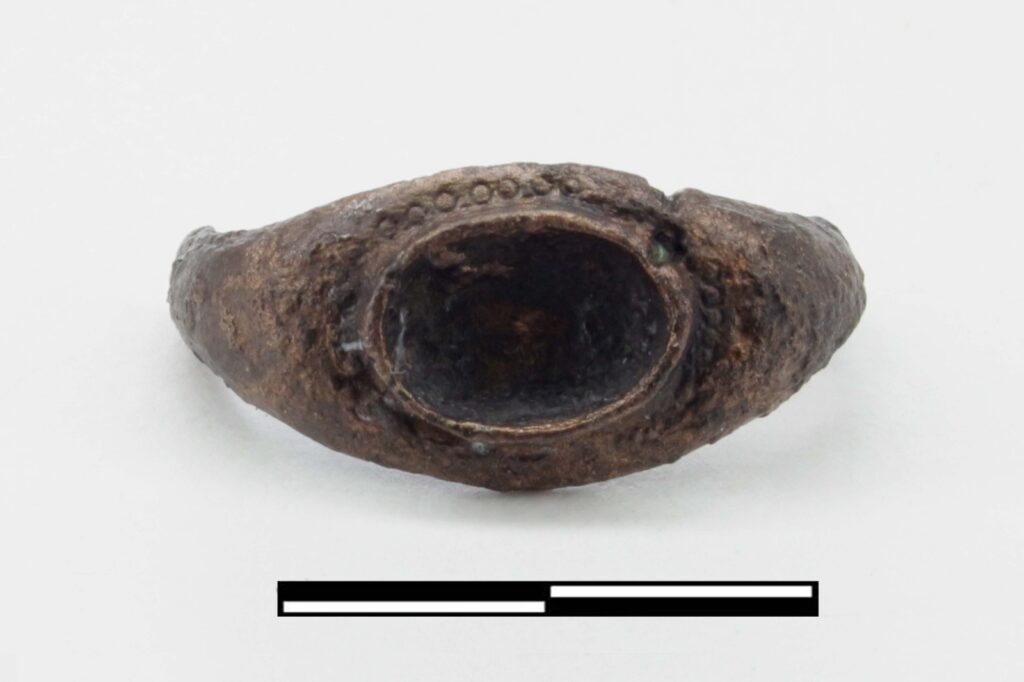
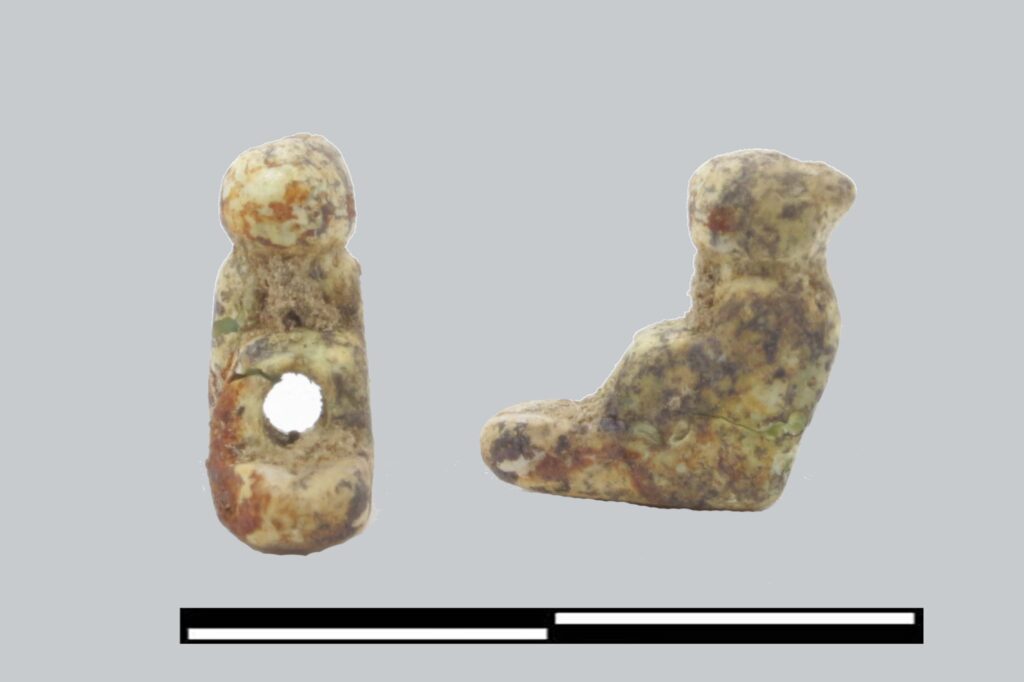
Skeleton and traction harness where found in kurgan №12